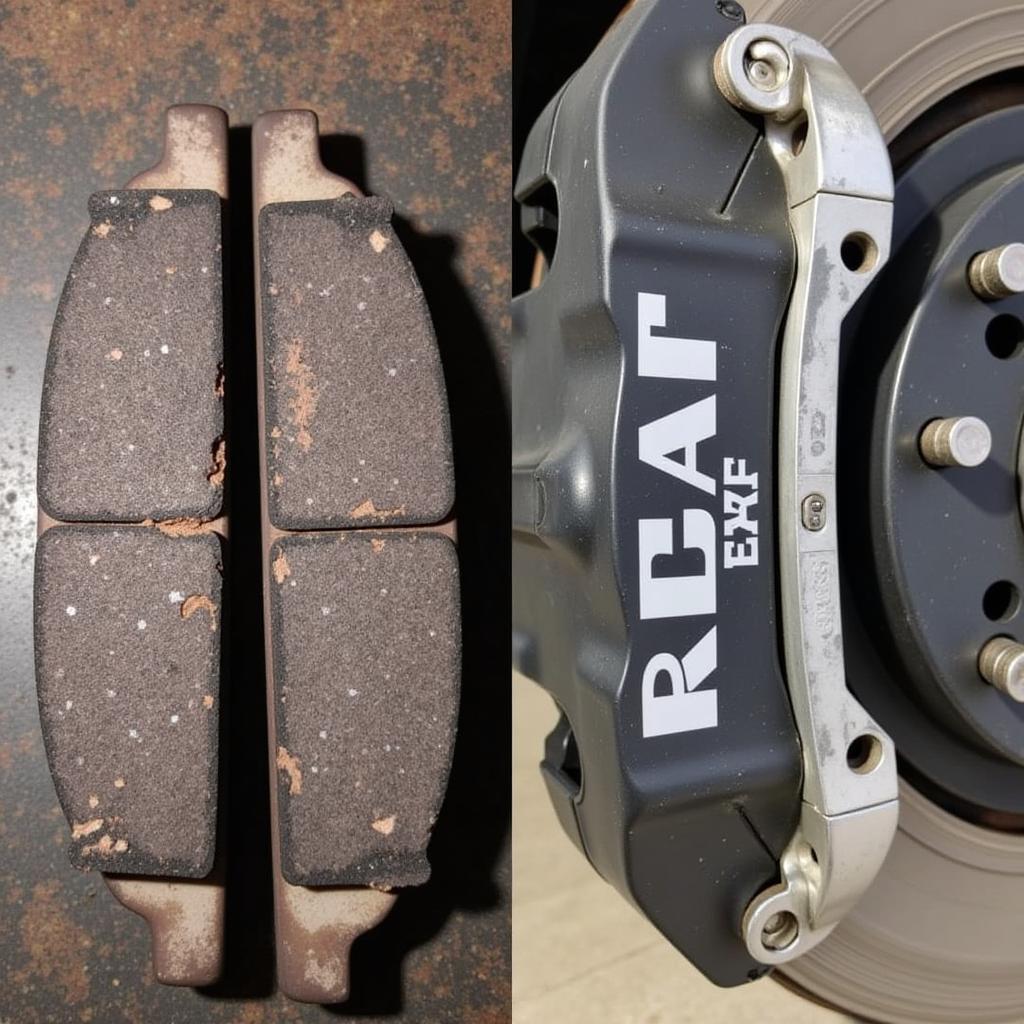The brake system warning light on your Honda CRV is an essential safety feature. When illuminated, it signals a potential issue with your braking system that requires immediate attention. Ignoring this warning light could lead to brake failure and a serious accident. This comprehensive guide will help you understand the common causes of a brake system warning light in a Honda CRV and provide potential solutions.
Common Causes of a Brake System Warning Light
Several factors can trigger the brake system warning light in your Honda CRV. Here are some of the most common culprits:
- Low Brake Fluid: Your Honda CRV, like all vehicles with hydraulic brakes, relies on brake fluid to transmit force from the brake pedal to the wheels. If the brake fluid level drops too low, often due to a leak or worn brake pads, the warning light will illuminate.
- Worn Brake Pads: Brake pads are designed to wear down over time. When they become too thin, a sensor triggers the warning light, indicating it’s time for a replacement.
- Faulty Brake Light Switch: The brake light switch activates your brake lights when you press the pedal. If this switch malfunctions, it can also trigger the brake system warning light.
- ABS Problem: If your Honda CRV has an Anti-lock Braking System (ABS) issue, a separate warning light usually illuminates. However, in some cases, the general brake system warning light may activate, especially if the ABS module is faulty.
- Parking Brake Engaged: It might seem obvious, but sometimes the simplest solution is overlooked. If you’ve accidentally left your parking brake partially engaged, it can trigger the warning light.
Troubleshooting the Brake System Warning Light
Before you panic, there are a few things you can check yourself:
- Check Your Parking Brake: Ensure your parking brake is fully disengaged. Even a slight engagement can trigger the light.
- Inspect Brake Fluid Level: Locate the brake fluid reservoir under the hood of your CRV. The reservoir will have a “MIN” and “MAX” marking. If the fluid level is below the minimum, add the recommended brake fluid type for your specific Honda CRV model.
- Check for Leaks: While inspecting the brake fluid level, look for any signs of leaks around the reservoir, brake lines, and near the wheels. Leaking brake fluid is a serious issue that needs immediate professional attention.
When to Seek Professional Help
If the warning light stays on after checking these basic items, or if you suspect a leak or more serious problem, it’s crucial to take your Honda CRV to a qualified mechanic immediately.
“Driving with a brake system problem is incredibly risky,” says Master Mechanic, John Smith from Smith’s Auto Repairs. “The potential consequences far outweigh the cost of a proper diagnosis and repair.”
Remote Diagnostics and Software Solutions
In some cases, modern technology can provide solutions without a trip to the mechanic. Remote diagnostics, offered by specialized services and some dealerships, can analyze your Honda CRV’s system for electronic faults. In some cases, software updates or recalibrations can be done remotely, resolving the issue.
“Remote diagnostics can be particularly helpful for addressing software-related brake system warnings,” explains Sarah Jones, a Senior Automotive Software Engineer at a leading car manufacturer. “However, it’s essential to remember that physical inspections and repairs still require a professional.”
Preventing Future Brake System Issues
 New Brake Pads Installed on Honda CRV
New Brake Pads Installed on Honda CRV
Proactive maintenance is key to preventing brake system issues and ensuring your safety on the road:
- Regular Brake Inspections: Have your brakes inspected at least once a year, or more frequently if you drive in heavy traffic or hilly areas.
- Timely Brake Pad Replacement: Don’t ignore the brake pad wear indicator. Replace brake pads as soon as the warning light illuminates.
- Quality Brake Fluid: Use the recommended brake fluid type for your Honda CRV and have it flushed and replaced according to your owner’s manual schedule.
Conclusion
The brake system warning light in your Honda CRV is a critical safety feature. Understanding its causes and taking prompt action can help prevent costly repairs and ensure your safety. If you encounter this warning light, follow the troubleshooting steps outlined above. However, for anything beyond simple checks, always seek professional assistance.


